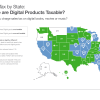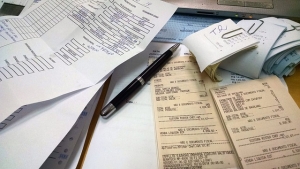In an earlier post, The Rules of Thumb blog from MoneyThumb addressed the challenges of accountants who do the taxes of online sellers. Today's blog post is geared specifically to those online sellers who work from home and who sometimes travel for their business. In this post, we will also cover the rules that apply when it comes to paying self-employment tax.
Below is a comprehensive list below of tax write-offs you can take advantage of this tax season if you are an online seller who fits this criterion:
Tax Write-Offs For Online Sellers
- Online Advertising
- Shipping and Packaging Cost
- Cost of Inventory
- Card Processing Fees
- Cost of Extended Education
- Website Expenses
- Cost of Email Program
- Seller Platform Commission
- Platform Search Placement
- Materials and Equipment
- Cost of Photographing Inventory
- Electronics
- Meals with Clients or Prospective Clients
- Cost of Home Office Set Up and Supplies
- Wifi and Internet Cost
- Part of Water Bill
- Part of Power Bill
- Home Office Furniture
- Property Insurance
- Gas for Traveling in Car
- Automobile Maintenance
- Car Insurance
- Vehicle Depreciation
- Parking
- Tolls
- Cost of Flights
- Lodging on Business Trips
- Meals While Traveling
- Health Insurance Cost
- Employee-Related Expenses
The above list of 30 tax write-offs pretty much covers the spectrum, although you may find other write-offs and should always be on the lookout for ways to make your tax burden less.
Now let's discuss self-employment tax.
Self-Employment Tax Rules
The guidelines for self-employment taxes are different than for wage earners’ taxes. Keep these three rules of thumb in mind.
Rule 1
Stash away between 25 and 30 percent of your income for taxes all year round.
Seem high? The amount may be more than you need, depending on how many deductions you can take. But it’s better to be over prepared.
Rule 2
Figure out your estimated tax.
You’ll be paying two types of taxes:
Self-employment tax. This tax substitutes for the Social Security and Medicare tax withheld from wage earners’ pay. For wage earners, the employer kicks in half of this tax. When you’re self-employed you are responsible for all of it. The self-employment tax rate may change from year to year. For instance, in the 2017 tax year, the rate was 15.3 percent on net income. 12.4 percent went towards Social Security tax and 2.9 percent went towards Medicare tax. There’s an additional Medicare tax of 0.9 percent for high earners or individuals who make $200,000 or more.
Income tax on your business profits. This tax is based on your net income. To calculate your net income, take the total revenue you earned—this is your gross income—and subtract any business expenses and deductions. We’ll talk about which deductions you can take in the next section. If your business expenses end up exceeding your income, for instance, you can deduct a net loss for the year.
If this is your first year paying taxes on self-employment, estimate how much you think you’ll earn during the year. You can make adjustments later if the estimate ends up being too high or too low.
The IRS 1040-ES helps you calculate your estimated tax. There’s a new form annually.
Rule 3
Pay taxes in quarterly installments—four times a year.
This one is hard to adjust to. But once you get the hang of it, quarterly tax payment actually helps with cash flow. You pay as you go rather than handing over a lump sum in the spring. Plus, you’ll avoid any penalties for late payment.
Once you figure out your estimated tax—self-employment tax plus income tax—divide that number by four. This is the amount you’ll pay the IRS each quarter or three months.
Check the Form 1040-ES for the payment dates. In general, they’ll be April 15, June 15, September 15, and January 15. The easiest way to pay is electronically at the IRS website. You can set up direct deposit for the due dates or figure out a monthly installment agreement if you can’t pay the full quarterly sum.
We hope this blog post is helpful to online sellers this tax season. If you have an accountant handle your income tax filing, they are well versed in all of the above information, and we strongly suggest as an online seller that you have a professional handle your taxes, even if they are not a professional accountant.
However, if you decide you can take care of filing your taxes yourself, we want you to know that MoneyThumb offers a version of our PDF financial file converters for home and personal use, and for self-employed individuals, that will drastically cut down your tax preparation time. This software converts your bank statements so that you can easily discern where you spent money on business expenses throughout the year.





















Add comment